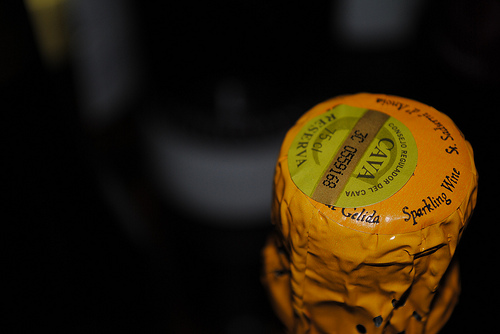Archive
Bring Your A Game
The final rounds of last month’s US Open tennis tournament were beset with some of the windiest conditions in the history of the event. From the commentators’ booth, John McEnroe observed, “Every player’s worst nightmare is to play in wind like this. It’s basically impossible to play your ‘A’ game.”
 How do you get up for those moments when you need to bring your ‘A’ game, but conditions (external or internal) are working against you? The wind is howling, your energy is flat, or your fear of failure is creating static that interferes with your performance? Without your ‘A’ game, you can wake up all of a sudden in the car on the way home and the opportunity has passed you by. You might experience this as an indictment of your whole self-worth: I AM SUCH A LOSER! No, let’s not go that far…but it’s true that somehow, in this particular moment, you weren’t able to be who you wanted to be when the stakes were high. You know you can do better.
How do you get up for those moments when you need to bring your ‘A’ game, but conditions (external or internal) are working against you? The wind is howling, your energy is flat, or your fear of failure is creating static that interferes with your performance? Without your ‘A’ game, you can wake up all of a sudden in the car on the way home and the opportunity has passed you by. You might experience this as an indictment of your whole self-worth: I AM SUCH A LOSER! No, let’s not go that far…but it’s true that somehow, in this particular moment, you weren’t able to be who you wanted to be when the stakes were high. You know you can do better.
To improve your chances of rising to the occasion with confidence and clarity when the stakes seem high, start by writing a big ‘A’ on a small piece of paper and keep it in your pocket or your purse in the days leading up to your big event. Use the following questions to bring a clear vision of success into sharp focus so that by the time your event arrives you’re not inventing your success in the moment, but simply following through on the ‘A’ game scenario that you have played out in your mind.
A is for Aspiration: How does this event relate to your biggest vision for success in your life? What do you want to take away from the experience? Reminding yourself why this opportunity means so much to you can energize you by connecting you to a sense of purpose. When you know what you want to get out of it, you can appropriately scale and shape the positive energy you want to put into it.
A is for Awareness: Big moments can expand in our awareness until they engulf us, making us feel small by comparison. One way to respond to this is to move your awareness outside yourself and take in the bigger picture. What’s at stake for the other people in the moment? Is it a big moment for them? How do you want to invite them to participate? What are you co-creating energetically together? What happens to your energy when you see this as a collective experience instead of one that depends entirely upon you?
A is for Attitude: There’s a reason why this feels so big. You can think about it as the degree of difficulty. When a diver walks up to the end of the diving board and executes a simple swan dive, there probably isn’t a lot of challenge attached to it. But try doing a pike with 2.5 somersaults and 2.5 twists from a 10 meter platform, and you’re due to earn some serious points if you nail it. So, first of all, give yourself a preliminary pat on the back for even trying something this big. Go you! And second, recognize how much impact your attitude has on your results. What does it feel like to dread this event? What does it feel like to anticipate it with eagerness and curiosity? What attitude will serve you best in bringing and executing on your ‘A’ game? That’s the one. Be that.
Braving the Discomfort Zone
 One person’s fear is another person’s fun, right? A friend of mine is totally unfazed by donning 50 pounds of scuba diving gear and breathing apparatus to plunge into 75 or 100 feet of water, but when she is faced with the prospect of walking into a room full of strangers her heart races, her breath gets shallow, her palms sweat.
One person’s fear is another person’s fun, right? A friend of mine is totally unfazed by donning 50 pounds of scuba diving gear and breathing apparatus to plunge into 75 or 100 feet of water, but when she is faced with the prospect of walking into a room full of strangers her heart races, her breath gets shallow, her palms sweat.
For me, singing in front of an audience can drive my anxiety up to acute levels. What sets off your fight or flight alarms? Regardless of what your particular challenge looks like, the fact that it feels risky is a solid clue to tell you that there might be something of substance for you to learn from it.
Oh, sure, we might wish to hang out endlessly in our comfort zones, those cozy, familiar, not too challenging places where we feel safe and self-assured.
Or we might crave more time in the flow zone that psychologist Mihaly Csikszentmihalyi has identified as the state in which people experience their greatest capacity for happiness and creativity. When you are absorbed in a “flow experience” he says, “…your sense of time disappears, you forget yourself, you feel part of something larger. And once the conditions are present, what you are doing becomes worth doing for its own sake.”
These two inner-directed zones are absolutely vital to a balanced, joyful, healthy life, representing a spectrum of unconscious feeling that ranges from serenity to ecstasy. But even if we could choose to spend all of our time there, we’d be cheating ourselves out of something critical, wouldn’t we?
Just as important is that discomfort zone in which we get conscious about what scares us and what matters to us most. It’s there that we identify the gaps in our life and define our opportunities for growth and understanding. In short, it’s there that we learn.
It’s only in the discomfort zone that you can gather valuable data by asking, “What makes this experience so difficult for me? What would it take to convert these feelings of vulnerability, inadequacy, stupidity, frustration, or uncertainty into feelings of comfort and flow?” Your discomfort zone is a practice field where you can acknowledge and challenge your biggest fears and declare your intention to disarm them in pursuit of what you really care about.
When you choose to enter the discomfort zone with intention and curiosity—walking into that room full of strangers, standing up there to sing—you build your muscles for navigating this challenging zone the next time you find yourself there unexpectedly. Will you give it a try?
In It Together
 In his warts-and-all autobiography, Open, Andre Agassi displays remarkable sensitivity in assessing his relationship to the sport that brought him into the public eye. He hates tennis, he asserts repeatedly, because it is the loneliest sport on the planet. At the same time, he recognizes tennis as a metaphor for life, and he fully accepts the gifts and lessons the game has offered him.
In his warts-and-all autobiography, Open, Andre Agassi displays remarkable sensitivity in assessing his relationship to the sport that brought him into the public eye. He hates tennis, he asserts repeatedly, because it is the loneliest sport on the planet. At the same time, he recognizes tennis as a metaphor for life, and he fully accepts the gifts and lessons the game has offered him.
His challenges are extraordinary: A terrorizing father, prodigious talent, competitive pressures of the highest order, and invasive celebrity. He makes some poor choices along the way. But he consistently makes one good choice, a choice that ensures his success, and this is to follow his instinct for meaningful connection with others.
Performing better in situations like Davis Cup and the Olympics—when he’s representing something greater than himself—Andre knows that for him, the antidote to tennis’s loneliness is being part of a team. He tends to his closest relationships with generosity and gratitude. In his singles career, he achieves his best results when he’s most aligned with a team of friends, family, coaches, and trainers.
Nobody embodies the spirit of coach/friend better than Gil Reyes, the strength trainer who has been with Agassi since early in his career. And as Andre recalls how Gil first expressed his commitment, I can’t help but think about the kind of teammates I want to have and the kind of teammate I want to be.
Gil said, “Andre, I won’t ever try to change you, because I’ve never tried to change anybody. If I could change somebody, I’d change myself. But I know I can give you structure and a blueprint to achieve what you want. There’s a difference between a plow horse and a racehorse. You don’t treat them the same. You hear all this talk about treating people equally, and I’m not sure equal means the same. As far as I’m concerned, you’re a racehorse, and I’ll always treat you accordingly. I’ll be firm, but fair. I’ll lead, never push. I’m not one of those people who expresses or articulates feelings very well, but from now on, just know this: It’s on, man. It is on. You know what I’m saying? We’re in a fight, and you can count on me until the last man is standing. Somewhere up there is a star with your name on it. I might not be able to help you find it, but I’ve got pretty strong shoulders, and you can stand on my shoulders while you’re looking for that star. You hear? For as long as you want. Stand on my shoulders and reach, man. Reach.”
Whose team are you on? Who are the teammates who help you shine?
What do you bring to the race?
 July is Tour de France time in my house. And you would think that after being married to an avid cyclist for 25 years I’d have a better handle on the rules and customs of this storied annual ritual.
July is Tour de France time in my house. And you would think that after being married to an avid cyclist for 25 years I’d have a better handle on the rules and customs of this storied annual ritual.
But no, like many American viewers, I still end up scratching my head with confusion over a particular tactic or turn of events.
Nevertheless, I enjoy following the race because there is always more to learn, and I have at least mastered the most important truth about stage racing: Just as in life, the success of the team depends on a complex blend of individual strengths.
Whether surging with the collective energy of the peloton or breaking away in pursuit of a stage win, riders are always aware of the role they play in the overall system. The shape of their bodies, the structure of their muscles, and their psychological dispositions determine what special skills they can be counted on to deliver.
Domestiques. Supporting the team’s other specialists, these riders take the lead for a time to give the others a rest, scoot back to the team car to fetch water or nourishment, surrender a wheel or even their whole bike when another rider has technical problems. Domestiques are all about team.
Climbers. Pursuing the “King of the Mountains” jersey for the team, these typically lightweight riders specialize in attacking the inclines, riding hundreds of kilometers on consecutive days through brutal climbs in the Alps and the Pyrenees. With a very high threshold for pain, Climbers are all about endurance.
Time Trialists. Aiming to reduce the team’s collective overall time, these riders maximize their efficiency, using knowledge of the course and aerodynamic positioning to race against the clock. Time trialists are all about discipline.
Sprinters. Nailing down stage wins and the prestigious green jersey for the team, these riders are gifted with the kind of fast-twitch muscle fiber that allows them to achieve short bursts of extreme speed even at the end of a long day of racing. Sprinters are all about speed.
General Classification (G.C.) Contenders. Excelling in more than one specialty—often climbing and time trialing—these are the guys who end up with the yellow jersey at the end of the race. Accumulating the lowest individual time from start to finish, these riders benefit from the support of the other specialists while personally investing in the team’s success by contending in every aspect of the race. G.C. Contenders are paradoxically all about self and all about leadership at the same time.
In real life, of course, our roles aren’t always so clearly delineated. One day we’re a sprinter, the next a domestique. But isn’t it fun to think about which of the cycling archetypes feels most like the real you? Which one do you choose most often?
To Err is Human. Celebrate It!
 If you’re human you make mistakes sometimes, and you probably hate to admit it. But what if instead of cringing and trying to hide it, you got curious about the upside of being wrong?
If you’re human you make mistakes sometimes, and you probably hate to admit it. But what if instead of cringing and trying to hide it, you got curious about the upside of being wrong?
In their book, The Art of Possibility, Rosamund and Ben Zander remind us that mistakes are indispensible to learning. “Giving an A” is one of the 12 daily practices they offer for shifting your mindset from limitations to possibilities. They first hit upon the practice as a technique for disarming the performance anxiety of Ben’s music conservatory students.
Worried about how they’d measure up, the students avoided taking risks in their interpretation class. When they were told from the outset that they’d receive an A, and they were asked to use their imaginations to time travel into the future and describe the effort with which they’d earned it, the prospect of making mistakes fell into the larger context of playing better, and became a lot less scary.
Ben writes, “It is only when we make mistakes in performance that we can really begin to notice what needs attention. In fact, I actively train my students that when they make a mistake, they are to lift their arms in the air, smile, and say, ‘How fascinating!’”
Now comes further illumination as to why being wrong should be more a cause for celebration than shame.
In a Boston Globe article introducing her new book, Being Wrong: Adventures in the Margin of Error, Kathryn Schulz calls for a new way of thinking about wrongness, one that recognizes that our fallibility is part and parcel of our brilliance. She explores how inductive reasoning, the process by which our brains add new knowledge and understanding at an impressive rate, is also responsible for our tendency to err.
And she makes the case that when viewed from the perspective of larger systems, an accepting stance toward inevitable personal error leads to process improvement. In some high stakes industries, like aviation and healthcare, reporting individual mistakes is encouraged, or even required, in the interest of preventing greater damage over the long term.
Of course, some systems take a much more punitive approach to error, and reinforce our instinct to keep our bloopers under wraps. But if we wanted to take a stand for being wrong, we might quote biologist Lewis Thomas who observed, “The capacity to blunder slightly is the real marvel of DNA. Without this special attribute, we would still be anaerobic bacteria and there would be no music.”
The next time you goof up—or even completely implode—what will you do to celebrate the successes that are bound to follow?